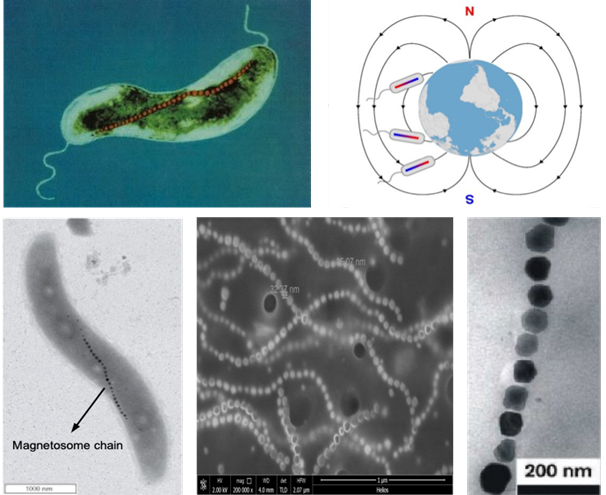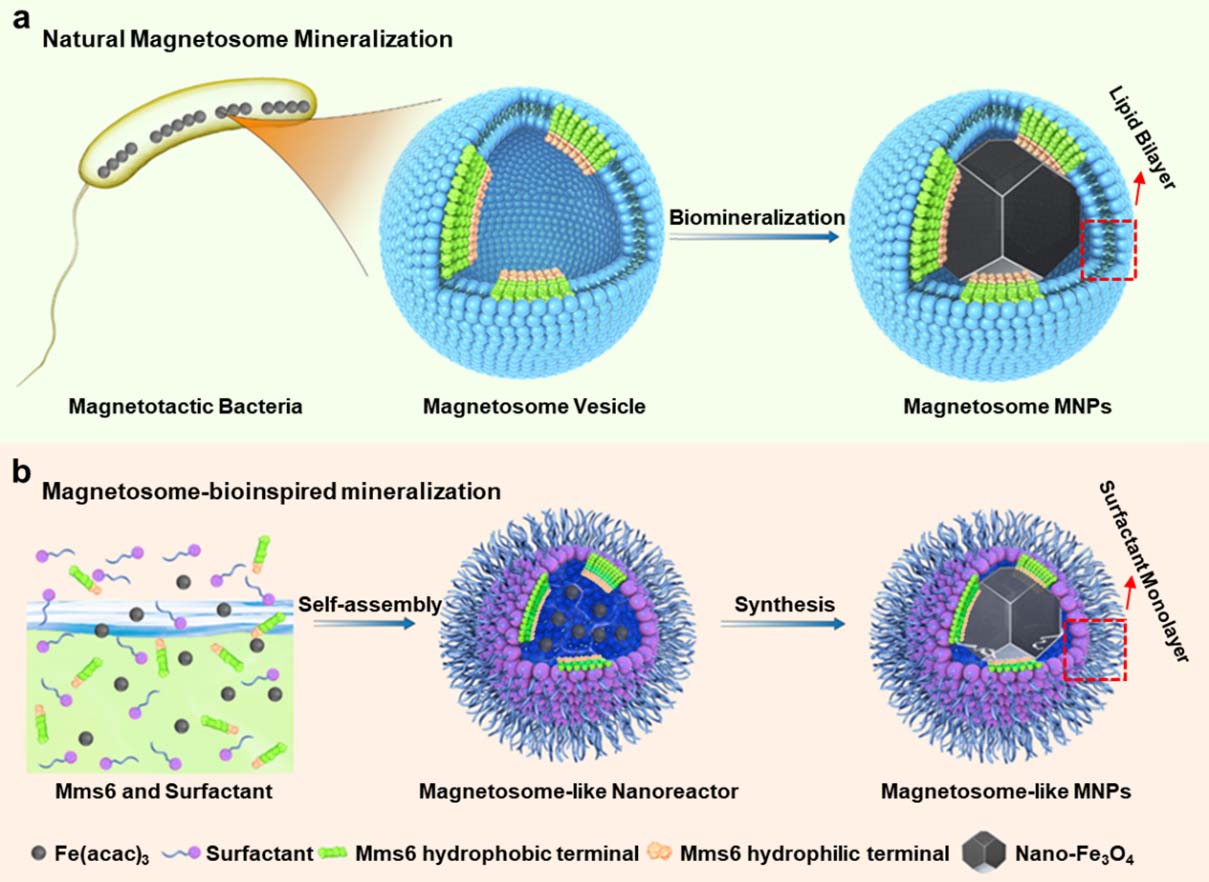
In a study published in PNAS, a research team led by Prof. WANG Junfeng from the Hefei Institutes of Physical Science (HFIPS) of the Chinese Academy of Sciences biomimetically synthesized soft ferromagnetic nanoparticles with high magnetic targeting and tumor tissue penetration based on the biomineralization mechanism of natural "biocompass" - magnetotactic bacteria.
Targeted delivery of anti-tumor drugs can effectively improve the efficacy and minimize the toxicity of drugs. Due to the limitations of the complexity of the tumor microenvironment, the average tumor targeting efficiency of nanodrugs is less than 1%, which constitutes one of the bottlenecks of tumor therapy.
Animals like pigeons, turtles and lizards can use the geomagnetic field to navigate. The bacteria, after obtaining iron from the surrounding environment, can move directionally along the magnetic field in the geomagnetic or artificial magnetic field. The magnetosomes offer a wide range of application prospects thanks to their obvious advantages in magnetic properties, biocompatibility and stability. However, natural magnetosome particles are easy to accumulate and precipitate in the external environment, which hinders their ability to penetrate the lesion area and the potential danger of deposition in blood vessels.
In this work, the researchers proposed a new strategy for biomimetic synthesis of magnetosomes. They constructed a magnetosome-like nanoreactor, and reconstructed the microenvironment of magnetosomes biomineralization of magnetotactic bacteria in vitro.
"The magnetosome-like nanoparticles synthesized with this method performed excellently," said MA Kun, first author of the study, "The DSPE-mPEG–coated magnetosome-like magnetic nanoparticles penetrated the lesion area of a tumor mouse model."
Experimental findings demonstrate the improvement by an order of magnitude in the targeting and penetrability of biomimetic magnetosomes in tumor tissues compared with other magnetic nanodrugs.
This work not only provides an efficient carrier for magnetic targeting delivery of nanodrugs, and but also expands a new model system for studying the biomineralization mechanism of magnetotactic bacteria in vitro.
This work was supported by the National Natural Science Foundation of China, the National Science and Technology Major Project of the Ministry of Science and Technology of China, the HFIPS Director's Fund and the Large-scale Scientific Facility "Steady High Magnet Field Facility".

Magnetic navigation of magnetotactic bacterial and the magnetosome Chains. (Image by MA Kun)

A reverse micelle nanoreactor regulated by the Mms6 protein to simulate the biomineralization process in magnetotactic bacterial. (Image by MA Kun)

Magnetosomes have the same crystal morphology and magnetic properties as natural magnetosomes, can effectively respond to external magnetic field and achieve targeted enrichment and efficient penetration of tumor tissues. (Image by MA Kun)

86-10-68597521 (day)
86-10-68597289 (night)

52 Sanlihe Rd., Xicheng District,
Beijing, China (100864)

